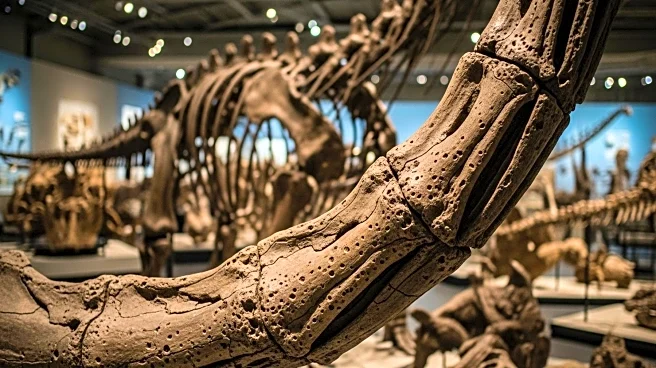What's Happening?
Researchers in China have successfully dated dinosaur eggs found at the Qinglongshan site using carbonate uranium-lead (U-Pb) dating, marking the first time this method has been applied to dinosaur eggs. The eggs, deposited approximately 85 million years ago during the Late Cretaceous period, provide new chronological constraints for these fossils. The study, published in Frontiers in Earth Science, aims to resolve uncertainties about the age of these eggs and improve understanding of the climate during the Cretaceous period.
Why It's Important?
The ability to precisely date dinosaur eggs using U-Pb dating revolutionizes the establishment of global dinosaur egg chronologies. This method allows researchers to directly date the eggs themselves, rather than relying on surrounding geological materials, which may have formed at different times. Understanding the age and environmental conditions of these eggs can offer insights into dinosaur evolution, extinction, and the climatic shifts that occurred during the Late Cretaceous period.
What's Next?
The research team plans to expand their sampling to include eggs found in different rock layers, which could help construct a regional timeline. They also aim to examine Dendroolithid eggs in neighboring basins to trace dinosaur migrations. These efforts could further illuminate the impact of climate change on dinosaur diversity and adaptation.
Beyond the Headlines
The study highlights the potential for advanced dating techniques to transform paleontological research, offering more accurate timelines and narratives about Earth's history. It also underscores the importance of preserving fossil sites and conducting thorough investigations to understand past environmental changes.













